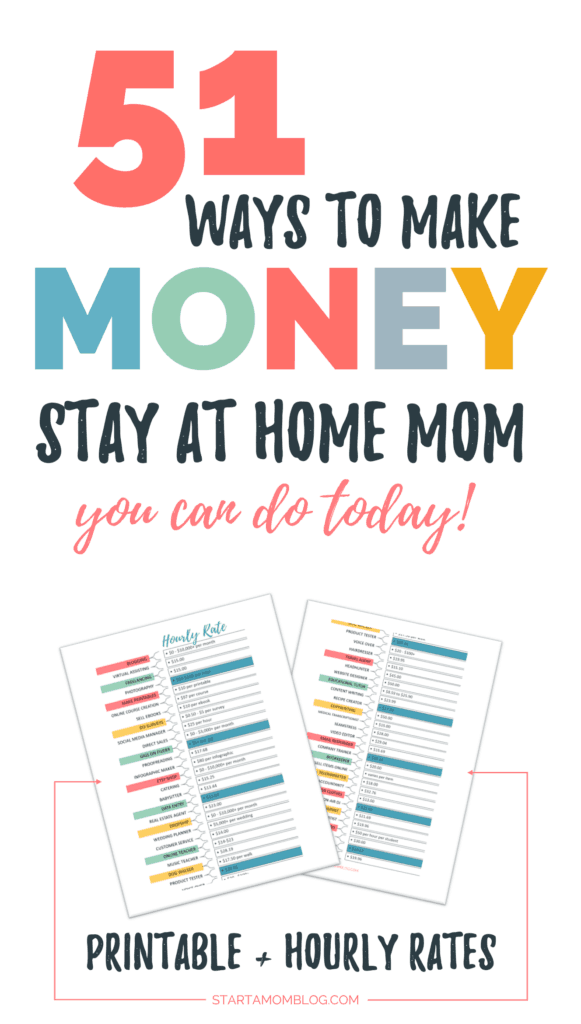Earn From Home Amazon FBA Business for Moms
Looking for a flexible and convenient way to earn income from the comfort of your own home? Well, look no further! This article is all about an easy home business opportunity specifically designed for stay-at-home moms like yourself. With this Amazon FBA business, you have the freedom to make your own hours, allowing you to work during nap times or whenever it’s most convenient for you. Whether you’re a stay-at-home mom or a homeschooling mom, this home-based business could be the perfect fit for you. So, grab a cup of coffee and get ready to discover how you can start earning money while juggling your parenting responsibilities – it’s easier than you might think!

Understanding Amazon FBA Business for Stay at Home Moms
Take the 7 Day ChallengeBeing a stay-at-home mom comes with its own set of challenges, but it doesn’t mean you have to give up on your dreams of financial independence. With the rise of online marketplaces like Amazon, there are now more opportunities than ever for stay-at-home moms to start their own businesses. One such opportunity is the Amazon FBA (Fulfillment by Amazon) business, which allows you to sell products on Amazon without the hassle of inventory management and shipping. In this article, we will walk you through the ins and outs of the Amazon FBA business and how it can be the perfect venture for stay-at-home moms like you.
Defining Amazon FBA
Amazon FBA is a program offered by Amazon that allows individuals to sell products on the Amazon platform. With FBA, you can send your products to Amazon’s fulfillment centers, and they take care of the storage, packaging, and shipping of your items. This means that you don’t have to worry about storing inventory or fulfilling orders yourself – Amazon handles all of that for you. In exchange for these services, Amazon charges fees based on the size and weight of your products.
How Amazon FBA Works
The process of running an Amazon FBA business is relatively straightforward. Once you have decided on the products you want to sell, you need to create an Amazon seller account and list your items. When an order is placed on Amazon, Amazon’s team of professionals picks, packs, and ships the products to the customer on your behalf. You can track your inventory and sales through your seller account, and Amazon handles customer service and returns. You can focus on finding profitable products and growing your business while Amazon takes care of the logistics.
Benefits of Amazon FBA For Stay At Home Moms
There are several benefits that make Amazon FBA an attractive option for stay-at-home moms looking to start their own businesses:
- Flexibility: One of the biggest advantages of running an Amazon FBA business is the flexibility it offers. Since you don’t have to worry about storing and shipping products yourself, you can work on your own schedule and make the most of the time while your kids nap or are at school.
- Low Startup Costs: Starting an Amazon FBA business requires relatively low upfront costs compared to traditional brick-and-mortar businesses. You don’t need to invest in a physical store or carry large amounts of inventory. This makes it an accessible business opportunity for stay-at-home moms with limited resources.
- Access to a Large Customer Base: By selling on Amazon, you gain access to millions of potential customers around the world. Amazon’s reputation and established customer base can help you reach a larger audience and increase your sales potential.
- Streamlined Operations: When you join the Amazon FBA program, you benefit from Amazon’s vast logistics network and expertise in fulfillment. This allows you to focus on growing your business and sourcing profitable products, while Amazon takes care of storage, packaging, and shipping.
Now that you understand the basics of Amazon FBA, let’s move on to finding the right products to sell on the platform.
Finding the Right Products to Sell on Amazon FBA
Choosing the right products to sell on Amazon can greatly impact the success of your FBA business. Here are some key factors to consider when searching for profitable items:
Assessing Market Demand
Before diving into a product, it’s essential to conduct thorough market research. Look for products with high demand and low competition. Consider using tools like Jungle Scout or Helium 10 to analyze sales trends and identify niches with potential for growth. It’s important to choose products that have steady demand year-round, rather than those tied to seasonal trends.
Competing Amazon FBA Products
Researching your competition is another crucial step. Look for similar products already being sold on Amazon and study their sales performance and customer reviews. This will help you understand the market saturation, pricing strategies, and potential gaps in the market that you can exploit. Differentiating your products from the competition is key to standing out and attracting customers.
Identifying Profitable Item Types for Amazon FBA
Certain item types tend to perform well on Amazon FBA. These include lightweight and small-sized products that are easy and cost-effective to store and ship. Look for products that have a good profit margin after accounting for Amazon’s fees. Health and beauty products, home and kitchen items, and electronics are popular categories on Amazon, but it’s important to choose a niche within these broader categories to avoid too much competition.
Once you have identified the products you want to sell, it’s time to set up your Amazon FBA business and start listing your items.
Setting Up Your Amazon FBA Business
To get started with Amazon FBA, you’ll need to go through a few essential steps:
Creating Amazon Seller Account
The first step is to create an Amazon seller account. Visit the Amazon Seller Central website and follow the prompts to sign up. Choose the FBA option when setting up your account, as this will enable you to take advantage of Amazon’s fulfillment services. Provide all the necessary information, such as your business details, banking information, and tax identification number.
How to List Items on Amazon FBA
Once your seller account is set up, you can start listing your products. Use Amazon’s Seller Central dashboard to create product listings by providing accurate descriptions, images, and other relevant information. Optimize your listings by including keywords that potential customers are likely to search for. Pay attention to pricing, ensuring you strike a balance between competitiveness and profitability.
Understanding Amazon’s Fees
Amazon charges various fees for using their FBA services. These fees include storage fees for holding your products in their warehouses, fulfillment fees for picking, packing, and shipping your items, and referral fees, which are a percentage of the product’s price. Familiarize yourself with Amazon’s fee structure to ensure you price your products accordingly and maintain healthy profit margins.
Now that you have set up your Amazon FBA business and listed your products, it’s time to focus on stocking your store with inventory.
Stocking Your Amazon FBA Store
The success of your Amazon FBA business relies heavily on sourcing the right products and managing your inventory efficiently. Here are some key aspects to consider:
Where to Source Products
There are several sourcing options available for Amazon FBA sellers. You can choose to purchase products from wholesale suppliers, meaning you buy products in bulk at discounted prices. Another option is to engage in retail arbitrage, where you purchase products at retail stores and resell them on Amazon at a higher price. Private labeling is also a popular strategy, where you source products from manufacturers and add your own branding.
Managing Inventory
Keeping track of your inventory is crucial for running a smooth Amazon FBA business. Amazon provides tools and reports to help you monitor your inventory levels. It’s important to ensure you have enough stock to meet customer demand while avoiding excess inventory that may incur additional storage fees. Monitoring sales velocity and using sales forecasting tools can help you optimize your inventory management.
Shipping Products to Amazon FBA Warehouse
When you have chosen your sourcing method and have your products ready, it’s time to ship them to Amazon’s fulfillment centers. Follow Amazon’s guidelines for packaging and shipping, making sure to label your items correctly. You can choose to ship products individually or consolidate them into larger shipments for more efficient handling. Once your products reach Amazon’s warehouses, they will be stored until an order is placed.
With your inventory stocked and your products listed on Amazon, the next step is to market your products effectively to drive sales.

How to Successfully Market Your Amazon FBA Products
To maximize your sales potential on Amazon, it’s important to market your products effectively. Here are some strategies to consider:
Optimizing Your Product Listings
Optimizing your product listings for search can make a big difference in driving organic traffic to your Amazon listings. Conduct keyword research using tools like Keyword Planner or Sonar to identify relevant keywords for your product. Incorporate these keywords naturally into your product titles, descriptions, and bullet points. Additionally, focus on creating high-quality images and compelling product descriptions to capture the attention of potential customers.
Amazon Sponsored Products Ads
Amazon offers a powerful advertising platform called Sponsored Products Ads. These ads allow you to promote your products directly within search results or on product detail pages. With Sponsored Products Ads, you can set your own budget, target specific keywords or products, and track the performance of your ads. This can be a highly effective way to increase visibility and boost sales.
Leveraging Social Media for Marketing
While Amazon is a fantastic platform for selling products, don’t underestimate the power of social media in driving traffic to your listings. Build a strong online presence by creating social media accounts for your business. Engage with your target audience by sharing valuable content, running promotions, and leveraging influencer partnerships. Social media can help you build brand recognition and drive traffic to your Amazon listings.
Now that you have successfully marketed your products and sales are rolling in, it’s important to understand how to handle customer service effectively.
How to Tackle Customer Service for Amazon FBA
Customer service plays a crucial role in maintaining a positive reputation and ensuring customer satisfaction. Here’s how you can tackle customer service effectively as an Amazon FBA seller:
Understanding Amazon’s Customer Service Policies
Familiarize yourself with Amazon’s customer service policies to ensure you adhere to their guidelines. Respond promptly to customer inquiries and messages to establish good communication. Provide accurate and detailed information about your products and shipping times. By providing excellent customer service, you can generate positive reviews and increase customer loyalty.
Handling Customer Complaints and Returns
While you strive for perfection, it’s inevitable that you may encounter customer complaints or requests for returns. Take these opportunities to address customer concerns promptly and professionally. Offer solutions, such as replacement products or refunds, to resolve issues. Handling complaints in a satisfactory manner can turn dissatisfied customers into loyal supporters.
Managing Feedback and Reviews
Positive reviews are vital for establishing trust and attracting new customers. Encourage satisfied customers to leave reviews by including inserts in your product packaging or sending follow-up emails. Monitor your product reviews regularly and respond to any negative feedback promptly. Addressing negative reviews shows that you care about customer satisfaction and can help mitigate their impact on your sales.
With customer service sorted, it’s time to think about expanding your Amazon FBA business and taking it to the next level.

Expanding Your Amazon FBA Business
Once you have established a successful Amazon FBA business, you may consider expanding to further increase your profits. Here are some ways to scale up your business:
Scaling Inventory
If your current products are selling well, consider scaling up your inventory to meet the growing demand. Source additional products within your niche or expand into new product lines. Keep a close eye on market trends and customer preferences to make informed decisions about which products to stock.
Branching Into New Product Categories
Diversifying your product range is another way to expand your Amazon FBA business. This allows you to tap into new customer segments and reduce the risk of relying too heavily on one product. Research new product categories, assess market demand, and consider any additional requirements, such as obtaining specific certifications or licenses.
Building a Brand
Taking your Amazon FBA business to the next level may involve building a brand. Establishing a cohesive brand identity can help you stand out from competitors and create a loyal customer base. Invest in professional product packaging, develop a brand logo, and create a consistent visual and tonal style across all your customer touchpoints.
As your Amazon FBA business grows, it’s important to plan your work schedule effectively to maintain a healthy work-life balance.
Planning Your Work Schedule
One of the major advantages of running an Amazon FBA business as a stay-at-home mom is the flexibility it offers in terms of working hours. Here’s how you can optimize your work schedule:
Flexibility of Working Hours with Amazon FBA
With Amazon FBA, you have the freedom to work when it suits you best. Take advantage of the quiet moments while your kids nap or are at school to focus on tasks requiring concentration. Alternatively, you can split your work throughout the day, completing smaller tasks during breaks and dedicating larger chunks of time when you have more availability.
Balancing Work and Homelife
Maintaining a healthy balance between your work and home life is essential for your well-being. Set clear boundaries between work and family time, designating specific hours for work and ensuring you have dedicated time with your kids. Communicate these boundaries to your family so that they understand your schedule and can support you in achieving a healthy work-life balance.
Optimizing Productivity While the Kids Nap
Make the most of naptime by focusing on tasks that require uninterrupted concentration, such as product research or listing optimization. Create a structured to-do list with specific goals for each session, making it easier to stay focused and productive. Break larger tasks into smaller, manageable chunks to make the most of shorter periods of work.
While juggling work and family life, it’s essential to maintain a healthy work-life balance to avoid burnout and stay motivated.

Maintaining a Healthy Work-Life Balance
Achieving a healthy work-life balance is crucial for the long-term success of your Amazon FBA business and your well-being as a stay-at-home mom. Here are some strategies to maintain balance:
Setting Boundaries Between Work and Home
Create physical and mental boundaries between your work and home life. Designate a dedicated workspace where you can focus on your business without distractions. Establish specific work hours and communicate them to your family, making it clear when you are available and when you need uninterrupted time to work.
Handling Stress and Burnout
Running an Amazon FBA business while taking care of your family can be demanding. It’s important to recognize and manage stress and burnout before they take a toll on your mental and physical health. Practice self-care by taking breaks, engaging in activities that bring you joy, and seeking support from family or friends when you need it.
Staying Motivated
Motivation is key to staying focused and achieving your goals. Set clear objectives for your business and celebrate small milestones along the way. Surround yourself with a supportive community of like-minded individuals, whether through online forums or local networking groups. Stay informed about industry trends and continuously update your knowledge to stay ahead of the game.
Insights from Successful Amazon FBA Moms
To wrap up this comprehensive guide, let’s gather some insights from successful Amazon FBA moms who have built profitable businesses while staying at home with their children:
Tips for Beginners
- Start with products you are passionate about or have knowledge of, as it will make the learning process more enjoyable.
- Don’t be afraid to experiment and try different product strategies. Adapt and learn from your experiences to refine your approach.
- Build a network of fellow Amazon FBA sellers to exchange ideas, share insights, and support each other on the journey.
Overcoming Challenges
- Accept that there will be challenges along the way, but view them as opportunities for growth and learning.
- Embrace a growth mindset and be willing to adapt your strategies based on market changes and customer feedback.
- Seek support from your loved ones and ask for help when needed. Surround yourself with a community that understands the unique challenges of being an Amazon FBA mom.
Achieving Success on Amazon FBA
- Always prioritize customer satisfaction. Happy customers lead to positive reviews and increased sales.
- Continuously analyze and optimize your product listings and marketing strategies. Stay up to date with industry trends and changes in Amazon’s policies.
- Maintain a good relationship with suppliers and ensure a steady supply of high-quality products.
In conclusion, the Amazon FBA business presents an incredible opportunity for stay-at-home moms to build successful businesses from the comfort of their homes. By understanding the basics of Amazon FBA, sourcing the right products, effectively managing your business, and maintaining a healthy work-life balance, you can achieve financial independence and create a flexible lifestyle that suits your needs as a stay-at-home mom. Start your journey today and unlock the potential of the Amazon marketplace.
